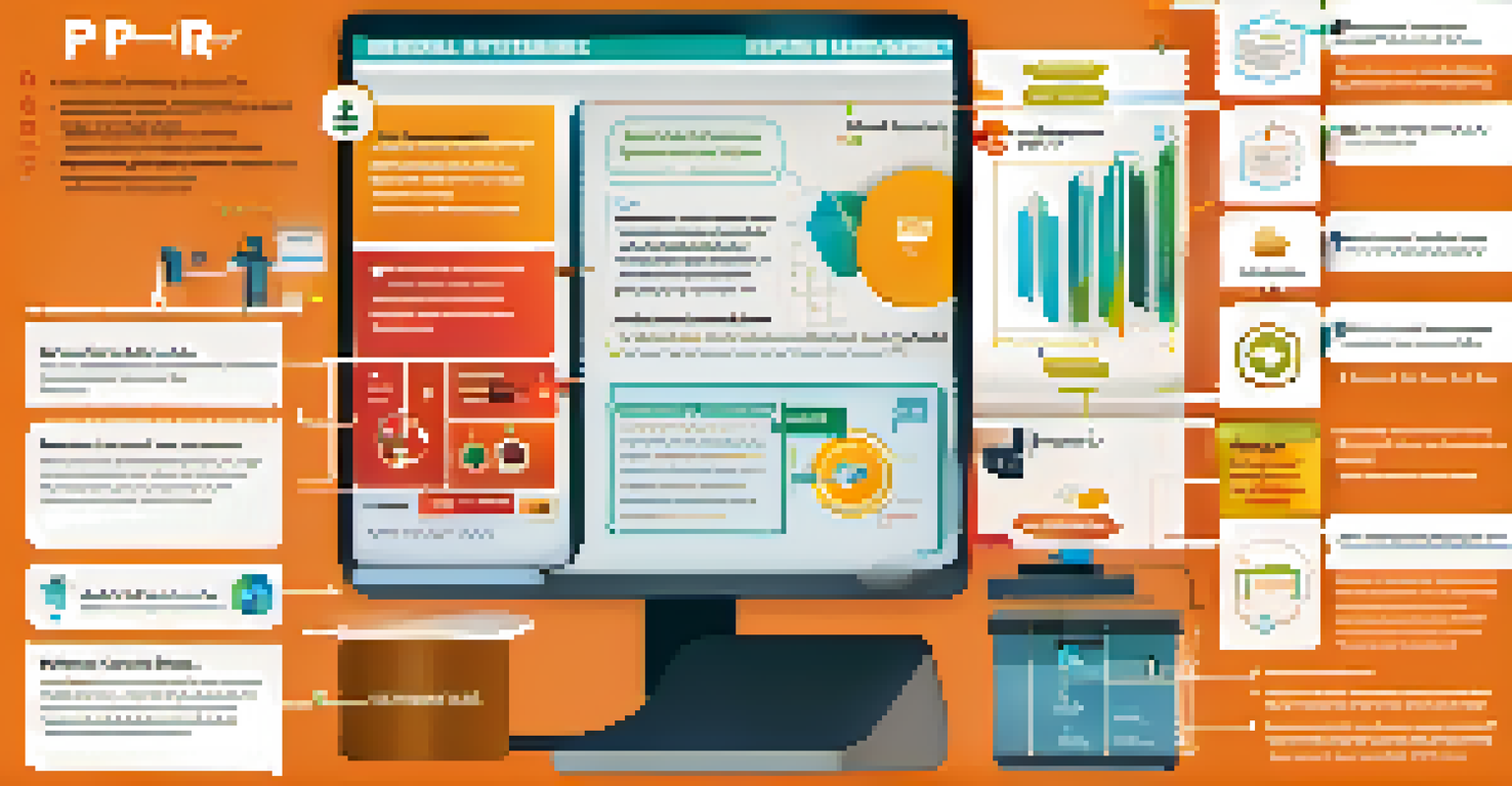How RPA Improves Data Accuracy and Compliance

Understanding RPA and Its Role in Data Management
Robotic Process Automation (RPA) is a technology that uses software robots to automate repetitive tasks. By mimicking human actions, these bots can handle data entry, report generation, and other administrative tasks with remarkable efficiency. This makes RPA a powerful tool for organizations looking to enhance their data management processes.
Automation is not just for the big companies anymore. With advancements in technology, even small businesses can leverage the power of automation to enhance efficiency and accuracy.
One of the most significant advantages of RPA is its ability to reduce human error. When humans handle data, mistakes can slip through the cracks, whether from fatigue or oversight. However, RPA bots operate based on predefined rules, ensuring that data is processed consistently and accurately every time.
Additionally, RPA can handle large volumes of data without the need for breaks or downtime. This means that businesses can rely on RPA to maintain high levels of data accuracy even during peak times, ultimately improving overall productivity and decision-making.
How RPA Enhances Data Accuracy
One of the core benefits of RPA is its ability to minimize errors in data handling. For instance, when entering data into a system, a bot can follow the same steps without variation, which significantly reduces the likelihood of mistakes. This consistency is crucial in industries where precise data is vital, such as finance and healthcare.

Moreover, RPA can cross-check data against multiple sources, ensuring that any discrepancies are flagged and resolved promptly. This automated verification process means that businesses can trust the data they are working with, leading to more informed decisions and strategies.
RPA Boosts Data Accuracy
Robotic Process Automation significantly minimizes human errors in data handling, ensuring consistent and reliable data processing.
In essence, RPA acts as a safeguard for data integrity. By reducing manual input and automating verification processes, organizations can maintain high data quality, which is essential for compliance and operational success.
Maintaining Compliance through Automation
Compliance with regulations is a critical concern for many businesses, especially in heavily regulated industries. RPA simplifies this process by automating compliance-related tasks, such as reporting and auditing. This not only saves time but also ensures that compliance standards are consistently met.
The future of work is not about man versus machine, but rather how we can collaborate with machines to achieve greater productivity and accuracy.
Additionally, RPA can be programmed to follow specific compliance protocols, automatically applying the latest regulations to data handling processes. This adaptability means that businesses can stay ahead of compliance requirements without constant manual intervention.
Furthermore, the audit trails created by RPA provide clear documentation of data handling activities. This transparency is invaluable during compliance audits, as it demonstrates a commitment to following regulations and enhances trust with stakeholders.
Real-World Examples of RPA in Action
Many organizations have successfully implemented RPA to improve data accuracy and compliance. For example, a major bank adopted RPA to streamline its loan processing system, which reduced data entry errors by over 80%. This not only boosted operational efficiency but also ensured that all loans complied with regulatory standards.
In another case, a healthcare provider used RPA to manage patient records. By automating data updates and ensuring that patient information was accurately recorded, the provider significantly improved patient care while staying compliant with healthcare regulations.
Streamlined Compliance Efforts
By automating compliance-related tasks, RPA helps businesses meet regulatory standards efficiently and maintain clear documentation for audits.
These real-world examples highlight how RPA can transform data processes, demonstrating its effectiveness in enhancing accuracy and ensuring compliance across various industries.
Challenges of Implementing RPA for Data Accuracy
While RPA offers numerous benefits, implementing it for data accuracy does come with challenges. One significant hurdle is the initial setup and configuration of the bots. Organizations must invest time and resources to map out processes and ensure that the bots are programmed correctly to handle data accurately.
Another challenge is the integration of RPA with existing systems. Businesses often have legacy systems that may not easily accommodate automation. Finding the right tools and platforms that support seamless integration is vital for ensuring that RPA delivers the expected results.
Lastly, there is a learning curve associated with RPA technology. Employees may need training to understand how to work alongside bots and how to troubleshoot any issues that may arise. Overcoming these challenges is essential for maximizing the benefits of RPA.
Best Practices for RPA Implementation
To ensure successful RPA implementation, businesses should start with a clear strategy. Identifying specific processes that would benefit most from automation is crucial. For instance, tasks that are repetitive and error-prone are often prime candidates for RPA, as they can yield the highest returns in terms of accuracy and compliance.
Moreover, involving stakeholders in the planning process can help align RPA initiatives with business goals. This collaboration fosters a sense of ownership and can lead to better outcomes as various perspectives are considered during implementation.
Future Innovations in RPA
The integration of AI and machine learning into RPA solutions promises to enhance their capabilities, making data management more intuitive and effective.
Finally, continuous monitoring and optimization of RPA processes are necessary. By regularly assessing the performance of RPA bots, organizations can make adjustments and improvements, ensuring that they maintain high levels of data accuracy and compliance over time.
The Future of RPA in Data Management
As technology evolves, the role of RPA in data management is expected to grow even further. New advancements, such as artificial intelligence (AI) and machine learning, are being integrated into RPA solutions, enhancing their capabilities. This means that RPA will not only automate tasks but also analyze data and make decisions, further improving accuracy.
The future also holds promise for more intuitive RPA solutions that require less technical expertise to implement. This democratization of technology will allow more businesses to leverage RPA, regardless of their size or industry, making data accuracy and compliance attainable for all.

Ultimately, the ongoing evolution of RPA technology will continue to shape how organizations manage data. As businesses embrace these innovations, they can look forward to enhanced accuracy, improved compliance, and greater operational efficiency.